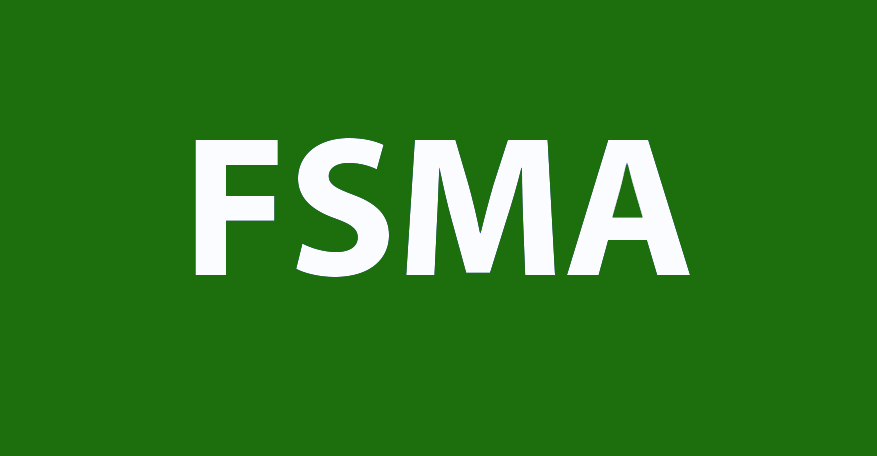Being audit-ready at any moment can be a daunting task, but pest management is one aspect of your audit that you can ace if you’re doing the right things. Pest control can account for up to 20% of your score, so taking it seriously can give you a huge boost the next time an auditor comes to your facility.
There are two components needed to help ease the stress of a third-party audit: An Integrated Pest Management (IPM) program and proper documentation.
IPM programs focus on incorporating green prevention and exclusion tactics into your facility’s ongoing sanitation and facility maintenance strategies, only using chemical solutions as a last resort. FSMA established that these tactics should be used when dealing with food safety issues and that thorough records should be kept to document the risk-based prevention efforts. This gives food manufacturing facilities even more of a reason to employ an IPM program.
A strong IPM program already has documentation built into it, as tracking pest activity and monitoring results over time are crucial steps to implementing the most effective pest prevention techniques for your business. Every IPM plan is tailored to your facility’s needs, so it needs to be dynamic and adaptable over time as new technologies emerge and your business needs change. Having the ability to show documentation of these changes and their positive effects will get you off to a great start on your next audit in showing your risk-based prevention food safety plan. If you do not already have an IPM program in place, speak with your pest management provider about establishing one.
Auditors like to see IPM programs in place because it means your business is taking a proactive approach and keeping detailed records.
Think about it like this: If the auditor is the judge and there’s no jury, would you ever walk into a court case without any evidence to prove your innocence? Of course not! So you wouldn’t want to walk into an audit without any documentation either.
In other words, document everything. Facilities must prepare and implement written food safety plans that identify potential risks to food safety, enumerate the steps and processes that will be executed to minimize or prevent those dangers, identify and implement monitoring procedures, keep detailed records of the food safety program, and list actions that will be taken to correct problems that do arise. If you’re doing all of this, you’ll make an auditor’s life that much simpler and improve the chances of receiving a high score.
When working to get audit-ready, you’ll want to have the following forms of documentation ready to go:
Proof of Training and Certification
Even though you know that your pest management professional is properly trained and certified, your auditor does not. Keep documentation on hand at your facility, as auditors may want to see one or more of the following documents:
- A copy of the valid registration or certification document
- hysical, written evidence that your pest management provider has been properly trained to use the materials necessary for your IPM program
- Evidence of training on IPM and Good Manufacturing Practices (GMPs)
Proof of Service and Material Changes
A strong IPM program changes as new technologies emerge and your business’s needs shift over time, so be sure to have detailed documentation of these changes as they occur. It’s also important to note the reasons for making changes. Auditors will be looking for written documentation for even the smallest of changes to your IPM program, so take careful notes as your program adapts along with your business.
It can also help to assign specific roles to your employees. This not only will give employees clear direction on how they can contribute to your IPM program, but it can also help your case with an auditor by showing that your facility is maintained by an entire team rather than just a few people. Teamwork is a key part of any IPM program, so be prepared to show how your team runs effectively.
Pest Sighting Reports That Correspond with Corrective and Preventive Actions
When there is a pest sighting in your facility, record it immediately. Keeping records of sightings will help ensure that steps are taken to improve and show accountability to an auditor. Once action is taken, record exactly what was done and the results of the counteractive efforts. That way, you’ll have a paper trail that shows an auditor that for every pest problem, your pest management provider came up with a proactive pest solution that resolved—or is working to resolve—the issue.
After taking corrective action, continue monitoring the issue over time and note any developments in order to help prevent the issue from reoccurring. Creating a trend report that keeps track of which pests your facility is dealing with over time can help, too, as it will help you determine which pests are the most problematic. Your provider can help build such a report.
Records of Pest Monitoring Devices and Traps with Corrective Actions
Pest monitoring devices and traps are great for giving insight into areas around your facilities that are most susceptible to pests. Along with these devices, however, you’ll need to show the following information to an auditor:
- When and how often the monitoring devices and traps were checked
- The type and quantity of each pest found
- Corrective actions taken to reduce pest activity and prevent further issues
Work with your pest management provider to gather all of this information, as it is usually the technician who works on these devices regularly. Being able to give an auditor the full picture can certainly help you on your inspection as it demonstrates attention to detail throughout your entire facility.
Annual Pest Management Assessments and Resulting Actions Taken
With most IPM programs, your pest management provider will thoroughly inspect your facility annually to identify areas that can be improved. Many auditors require these annual check-ups, and they will be looking for proof that these facility assessments occurred and that action was taken as a result that led to positive changes. Year-over-year improvement is important, so measure your success against the areas of improvement specified in these annual inspection reports. That way, you can meet the objectives prior to an audit.
These annual inspections give you a chance to look back and see the progression over the years. If there are any pest issues that pop up year after year, make them a priority in order to show that your program is trending in the right direction.
This proactive approach to pest management will help protect your business from pests and the inherent risks, as well as help give you a better chance of receiving an excellent score on your next audit.
So don’t be afraid of an audit the next time one comes around. With a strong IPM program in place and detailed documentation over the course of the year, there won’t be an exorbitant amount of preparation needed. Stay organized and keep all of the above-mentioned documents together and on-site to keep things simple for both you and your auditor. All of these elements will help your facility receive a strong score and be audit-ready at a moment’s notice.




















